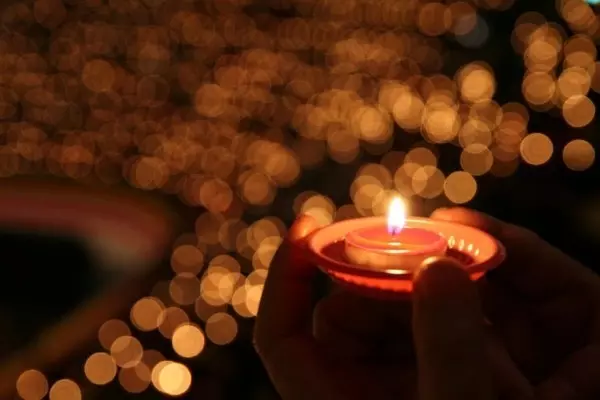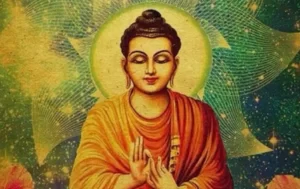Are you searching for a powerful way to bring peace, healing, and compassion into your life? Look no further than the Great Compassion Mantra, a sacred chant that has been recited for centuries in Buddhist traditions. This mantra is believed to invoke the blessings of the Bodhisattva of Compassion, Avalokiteshvara, and can help to calm the mind, purify negative karma, and generate loving-kindness.
At Lotusbuddhas.com, we believe that the Great Compassion Mantra is a vital practice for anyone seeking spiritual growth and inner transformation.
In this guide, we will provide step-by-step instructions for how to chant the Great Compassion Mantra. Whether you are a seasoned meditator or a beginner on the path, you will find valuable insights and guidance to enhance your practice and deepen your connection with the Buddhas.
What is Great Compassion Mantra?

The Great Compassion Mantra is a sacred chant that originated in Buddhist traditions. It is also known as the Da Bei Zhou in Chinese, the Dainichi Nyorai no Daimandara in Japanese, and the Maha Karuna Dharani in Sanskrit. The mantra consists of 84 sentences that were preached by Avalokiteshvara Bodhisattva and certified by the Buddhas.
The Great Compassion Mantra is believed to invoke the blessings of the Bodhisattva of Compassion, Avalokiteshvara, and can help to calm the mind, purify negative karma, and generate compassion. It is a powerful tool for spiritual growth and inner transformation, and has been recited for centuries by Buddhists around the world.
Despite its name, the Great Compassion Mantra is actually a type of dharani, which is similar to a mantra but longer in length. It is a text that is believed to have originated from the golden speech of Avalokiteshvara, and is considered to be a form of protection and a source of blessings for those who recite it with true belief and devotion.
One should chant the Great Compassion Mantra in front of the Buddha altar

According to Buddhist teachings, it is recommended that practitioners recite mantras in general and the Great Compassion Mantra in particular when in the presence of a Buddha altar. If you do not have a Buddha altar in your home, you can go to a temple to recite the mantra and receive blessings from the Buddhas, which can help to improve your health, relationships, and spiritual well-being.
The Great Compassion Mantra was used by the Avalokitesvara to invoke the names of 81 Buddhas who specialize in eliminating evil spirits, making it a very powerful mantra. As more people recite the mantra, the resonance of its energy and wisdom will grow stronger, allowing the souls and spirits of the deceased to transcend.
However, there are still some souls that remain in this world because their karma has not yet been fully resolved, they are still attached to worldly desires, and have not given up their bad habits. As a result, they must continue to practice and pay their karma in order to transcend samsara.
While it is possible to recite mantras at home, the effects may not be as strong as when reciting in the presence of a Buddha altar. In fact, reciting mantras without the necessary strength can unintentionally cause negative consequences. Therefore, it is best to recite mantras at temples or large ashrams where the power is strongest and where you can avoid negative outcomes while helping other spirits receive these benefits as well.
When reciting the Great Compassion Mantra, it is essential to be persistent and maintain a steady state of mind. Heavy karma cannot be paid off all at once, so continued effort is necessary. Furthermore, it is important to recite mantras at a temple in order to benefit from the power of the Buddha, Dharma, and Sangha.
It is important to pay attention to the volume and tone when chanting the Great Compassion Mantra
When reciting the Great Compassion Mantra, it is recommended that the practitioner recites it quickly and loudly with a deep and powerful sound to prevent drowsiness, distraction, and confusion. The deep sound produced while chanting can awaken the Buddha inside each individual and those around them.
The most crucial aspect of chanting the Great Compassion Mantra is to cultivate a clear, encouraging, and exhilarating mind. Therefore, it is more beneficial to chant the mantra in a group rather than alone, particularly for beginners.
Moreover, one can also lip-read or silently read the mantra while listening or recite it silently while sitting in meditation through visualization. This method is particularly useful for experienced practitioners.
In general, regardless of the chanting method used, having a clear mind and eliminating bad habits is essential. Being mindful in all postures, such as walking, standing, lying down, and sitting, and constantly reflecting on the Buddha and good things is the best way to cultivate.
The appropriate time to chant the Great Compassion Mantra
Another thing we need to keep in mind when reciting the Great Compassion Mantra is to sincerely let go of unwholesome desires, which is what Bodhisattva Guan Yin wants sentient beings to practice.
As long as the mind is pure, the mantra can be recited at any time. However, it’s important to choose a quiet place when reciting mantras to ensure comfort and calmness of the mind, and to prevent outside distractions that may interfere with the chanting.
If there is a Buddha altar at home, it is best to sit there while chanting, as it is the optimal space for focusing and resonating with the positive energy emitted during the Great Compassion Mantra chanting.
How to dedicate merit after chanting the Great Compassion Mantra

Pray for this merit
Towards all
Disciples and sentient beings
All are peaceful.
Reciting mantras presents an opportunity to repay our ancestors. Therefore, after chanting the Great Compassion Mantra, practitioners can recite a prepared prayer to send to the Buddhas and Bodhisattvas, dedicate merit, and bless their nine ancestors.
After finishing the prayer, it’s important not to rush to get up, but instead, take five minutes to “discharge meditation.” To do this, take a long breath to bring oxygen to the abdomen and then slowly exhale. Gently move your shoulders, neck, and upper body about five times to relax your muscles. Next, gently rub your eyes with your hands and massage your calves for better blood circulation. If everything feels normal, then you can stand up to end the recitation of the Great Compassion Mantra.
Remember that you can read many Buddhist scriptures, but the Buddha is within your mind. The most important thing is that your mind should be directed towards the Buddha. You can chant the Great Compassion Mantra at home to pray for peace, health, and mental clarity. Some people believe that when chanting mantras, yogis should face East to send peaceful energy to all mankind.
Additionally, some monks believe that the Great Compassion Mantra is not the strongest, and that the key to its strength lies in the mind of the person who recites it. If the mind is not in a good place, reciting the mantra many times will not produce good results; it may even have negative effects. This is why the Buddha taught “Precepts – Concentration – Wisdom.” Keeping the precepts clean will help keep the mind calm, and a calm mind can be as still as a lake to see the light of wisdom. When you know how to chant the Great Compassion Mantra, you will know how to keep the precepts, calm the mind, and from there, wisdom arises.





